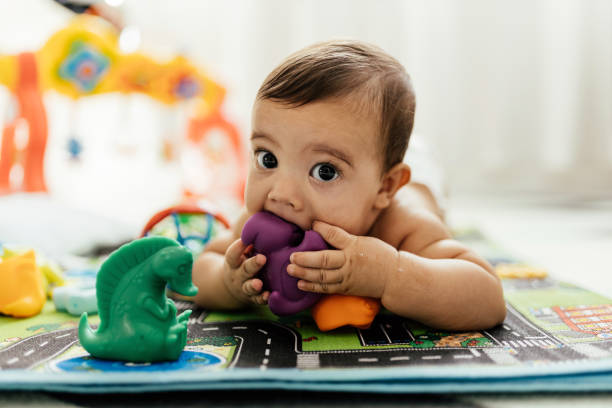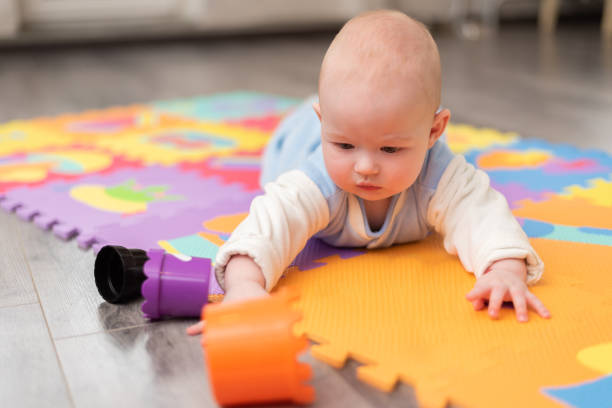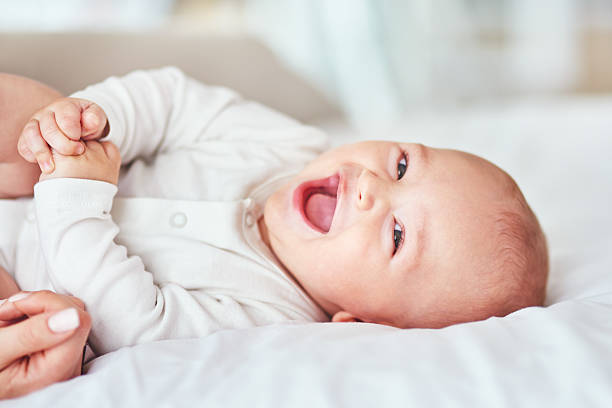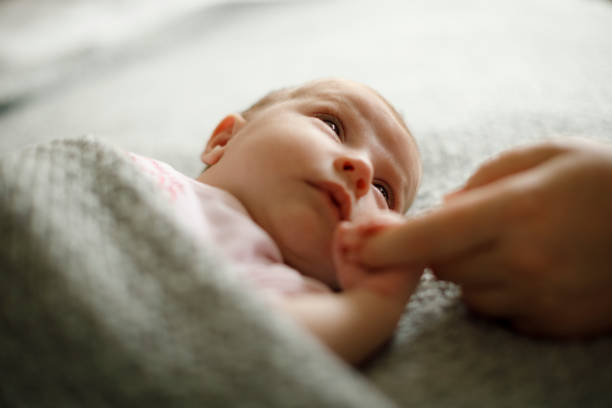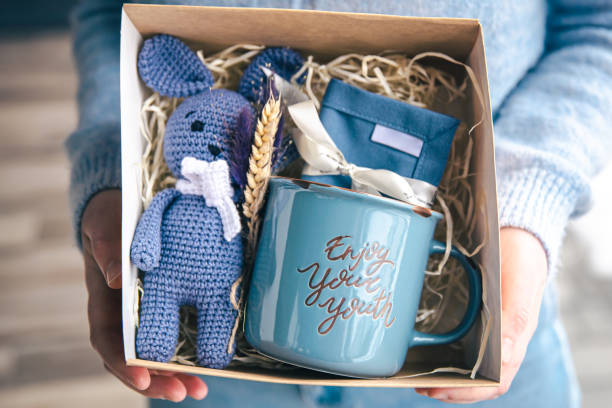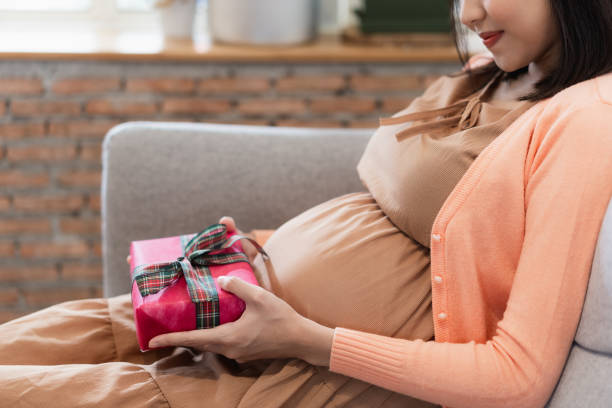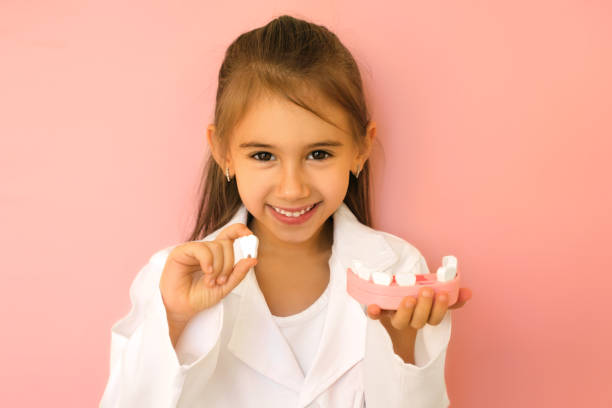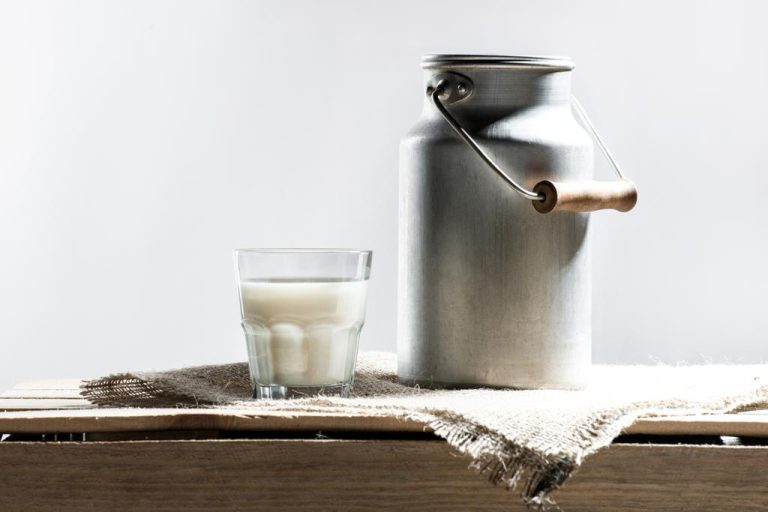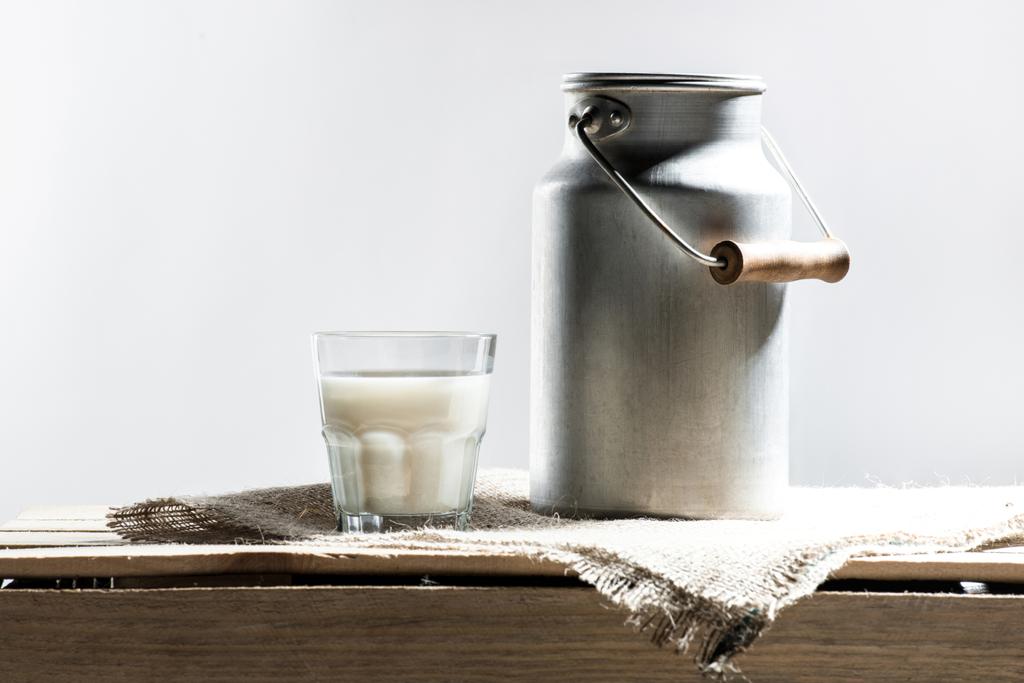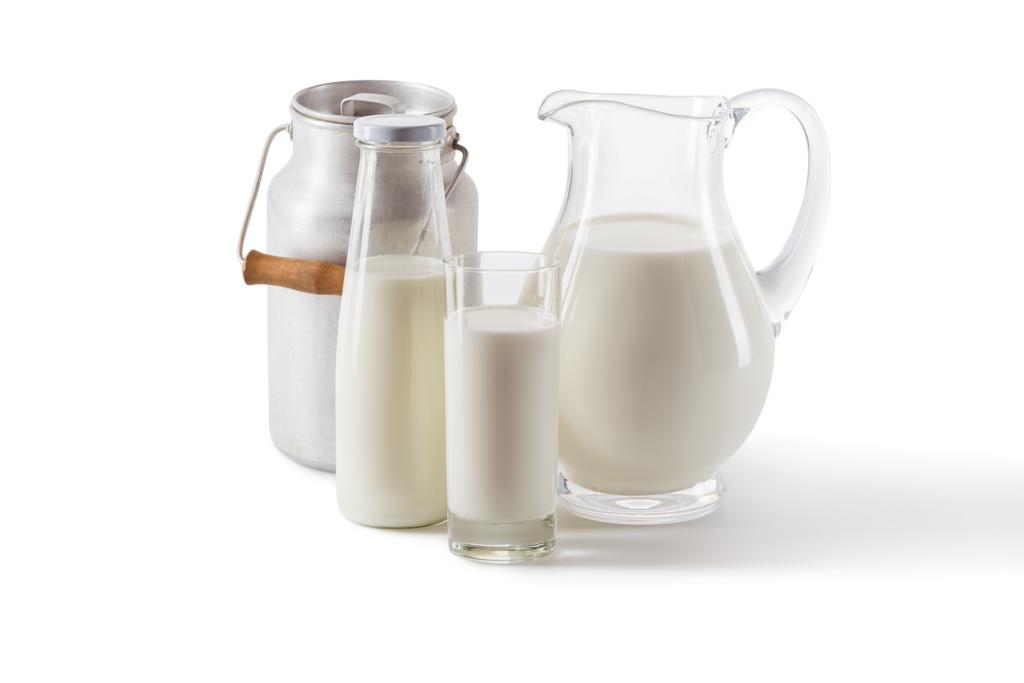Newborns typically need a fresh diaper seven to eight times a day. They also often have a bowel movement immediately after eating, so a fresh diaper is necessary at least then. Older children need an average of five diapers a day.
Get everything ready before wrapping
Babies should never be left unattended on the changing table as it only takes a baby a few seconds to turn around and then they can quickly fall off the changing table. For this reason, you should have everything you need ready for changing at the changing table before you put the baby on the changing table.
For diaper changing you need: fresh diapers, lukewarm water in a bowl and washcloths or wet wipes, paper or towel to dry off, cream, oil, a rubbish bin for the used diaper, and, if necessary, clean clothes.
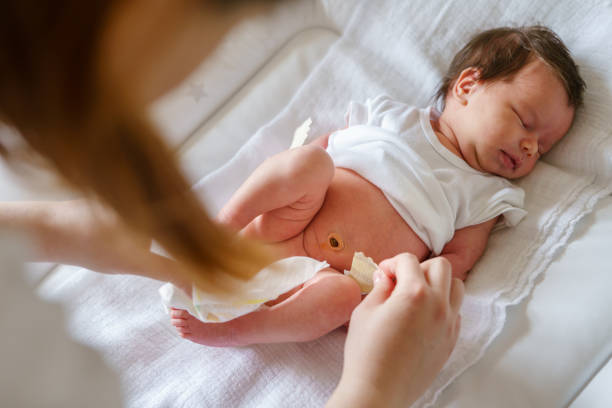
If you need anything else while you’re changing, hold the baby in your arms or lay him on a blanket on the floor or in his crib while you’re away. Although falls from the changing table can also be minor, they can also lead to the most serious or even fatal injuries to the baby.
Instructions on how to diaper
For a big deal, you can wipe the baby’s bottom with the clean part of the used diaper or with clean tissue paper. Disposable wipes soaked in oil or lotion are suitable for removing stubborn cream or stool residue.
Then the entire diaper area and the creases on the legs are carefully cleaned with warm water and washcloths or disposable washcloths. Boiled water is recommended for newborns, as it could get into the belly button that has not yet healed.
The skin should then be dried well with a soft towel, dabbing rather than rubbing. No moisture should remain in the skin folds as this can soften the skin and cause skin problems.
If your child is prone to soreness or redness, apply barrier cream to the diaper area after cleaning. It serves as moisture protection as it forms a buffer between the skin and the wet diaper. The cream should only be applied thinly, otherwise, the skin will be impaired in its ability to breathe.
Take your time when diapering, so that the baby can kick around without a diaper for a few minutes – preferably before applying the cream – and thus get air to the buttocks. The fresh air prevents soreness. In the case of already reddened skin, it helps in the healing process. But make sure that it is warm enough for your bare bottom and avoid drafts in the room.
Prevent skin problems on the baby’s bottom
Many babies get skin problems on their buttocks due to the warm, humid climate in full diapers. You can counteract this skin irritation from the outset by changing the diaper as soon as possible after every little or big deal with the baby so that the buttocks are always kept clean and dry. You should also make sure that the baby can always kick around without a diaper and clothes at a warm room temperature without drafts so that fresh air can get to the buttocks.
Frequent diaper changes protect sensitive baby skin
The basic rule is that babies and toddlers should be given fresh diapers individually as needed. However, you should change diapers as soon as possible, especially after every big transaction, as the feces attack the skin and painful inflammation (diaper dermatitis) can occur if you do not change diapers in good time.
If your skin is sore despite changing diapers enough times, you should initially avoid using wet wipes (some children are allergic to the ingredients) and only clean the diaper area with clear water and a washcloth. Then carefully pat dry or blow dry with a warm (not hot) hairdryer and apply lotion.
Change cloth diapers more often than disposable diapers

Change cloth diapers more often than disposable diapers. Many parents ponder which diaper changing system to use. Disposable diaper or cloth diaper? The cloth diaper has the advantage that it is more air permeable. It should be noted, however, that cloth nappies have to be changed more often, since the moisture is absorbed far less and moisture can easily build up as a result, which can have an unfavorable effect on the baby’s skin.
Wrap in a warm environment
When changing diapers, you should make sure that the room where you are diaper changing is sufficiently heated so that the baby does not freeze. Newborns in particular do not yet have a thick layer of fat that protects the body from the cold, so the room temperature should not be below 22 degrees.
Special radiant heaters are available from specialist retailers, which are attached above the changing table. They are switched on just before changing and then generate a pleasant warmth when you undress the baby for changing. However, it is important that you switch off the radiant heater after changing your diaper, otherwise, there is a risk of fire.
Alternatively, heatable changing mats are also available in specialist shops, which should keep the baby warm. In any case, you should also avoid drafts. Therefore, keep the windows closed when changing diapers.

